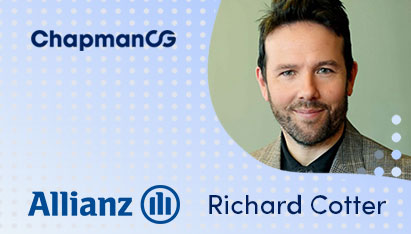How you feel about social media generally will depend greatly on a number of factors, not least your age and passion for technology. But love it or hate it, social media is growing in importance in both our personal and professional lives. For anyone who has seen the slightly terrifying Black Mirror episode “Nosedive”, you’ll recall the futuristic glimpse into how social media ends up having an impact on socioeconomic status by rating people in terms of their likeability (almost like a social Uber rating). Thankfully, it’s just fiction for now, but it does raise some interesting topics around our growing social media usage.
As advances in the digital world continue to evolve at an ever-increasing pace, organisations are now striving to keep up, especially when it comes to HR and Talent. Employer branding and recruitment are possibly the two main functions that have felt the biggest change here. Companies have realised it is near impossible to ban the use of social media in the workplace; instead, they have decided to start trying to leverage it.
Social media has helped organisations to become more human and more accessible. There is even a new term for recruiting by social media, “Social Recruiting”. A recent SHRM study showed that over a third of organisations are working to leverage mobile recruitment to target smartphone users to increase their talent branding, attract passive candidates and attempt to reduce time-to-hire. Another tactic is to empower current employees to tweet or blog about their work and office culture, or post photos to the corporate Facebook page.
Passive candidates are tricky. They don’t look at job boards and aren’t actively seeking employment, but like active candidates, they are on social media daily, so finding creative ways to capture their attention is key. And given that more and more people are have their web experiences on a mobile device, it’s important to ensure your application process is optimised for mobile.
Creating The Right Strategy
At the heart of social media is the ability to connect with people, and that’s definitely something HR can understand. But with so many different social platforms, how do you choose the right ones for your organisation?
Selecting the right platform to use will depend a great deal on the organisation and the message the brand is trying to portray. Years ago, LinkedIn was the place to go for professionals wishing to connect, but today, many feel that it’s become too traditional and too formal. Creating meaningful connections has become harder as people become more savvy to “marketing efforts” versus “authentic” interactions. For some organisations, Snapchat stories may not convey the right professional image, and there’s a surprising number of companies (and individuals) jumping off the Facebook bandwagon. But where are they going?
Instagram has increasingly become the new tool of attracting passive candidates and targeting smartphone users. Instagram stories are being touted as the next big thing for recruiting as the employer branding opportunities can be far more impactful than a corporate homepage. And start-ups like Howdy, an intelligent networking app designed to find and foster meaningful relationships that create the right opportunities for success, are literally changing the game on how people connect.
Staying abreast of the latest #trends has become more important than ever for today’s HR leaders if they want to communicate their brand identities in the most effective and authentic ways. Start by finding out what social media platforms your current employees are using . If you’re starting from scratch, see what your talent competitors are doing in that space. And don’t just mirror it, but take their ideas and marry it with what makes your organisation unique . The more you do it, the better and more authentic you will become, and authenticity is key to attracting potential talent and ultimately making your brand successful. While consistency is critical, don’t post for the sake of posting. Set realistic targets for your organisation and see how they evolve over time. Sometimes there will be less to post, while other weeks there might be a flutter of activity that you want to share. Remember that each platform should have its own character. Therefore, it’s not a copy-and-paste exercise; instead, take the time to cultivate the different personalities you think are best suited for each platform . This means serious thought and time must go into your posts if you want them to be authentic and effective.
Keep it Simple – The Employee Experience
A recent BBC article wrote about how advances in technology around recruitment (including using AI technology to analyse video candidate interviews) was actually making the experience for jobseekers less personal and more confusing.And, according to CareerBuilder, about 70% of employers look at social media accounts before making a hiring decision; some even use third-party software like Social Intelligence to screen for online behaviour (the social media equivalent of a criminal background check). Concerns around invasion of privacy and the General Data Protection Regulation (GDPR), which comes into effect in May 2018 across Europe, may lead employers to stick to more traditional recruitment and selection methods.
These are two important considerations that Talent Acquisition leaders will need to take into account when finding the balance between improving processes and the time-to-hire and retaining the necessary “human element” in hiring.
And it’s not just companies who are using social media to vet potential employees. Candidates can now venture further than just looking at Glassdoor and the company website to search social media for insights into an organisation’s reputation, culture and attractive employee benefits. Does your social profile reflect these accurately?
It is important that companies remember that social media trends have a particularly short lifespan, so perhaps the most crucial aspect to utilising social media effectively is to keep the strategy relevant to an organisation’s target audience. The frequency, and types of communications and platforms will evolve over time, but it’s important to keep those messages true to the heart and culture of the organisation… #keepitreal


 Andrea Merrigan
Andrea Merrigan Orelia Chan
Orelia Chan Stanislav Medvedev
Stanislav Medvedev Fleur Daniell
Fleur Daniell Finian Toh
Finian Toh Tim Rayner
Tim Rayner Nicola Hasling
Nicola Hasling Stefanie Cross-Wilson
Stefanie Cross-Wilson


